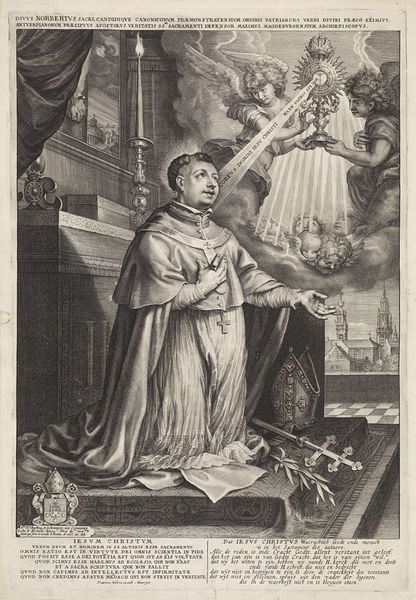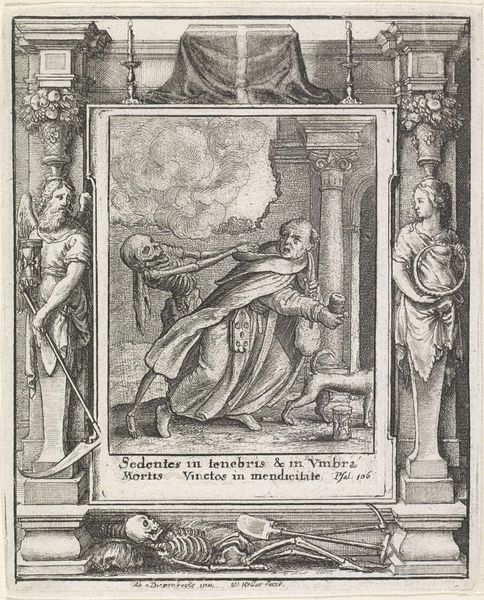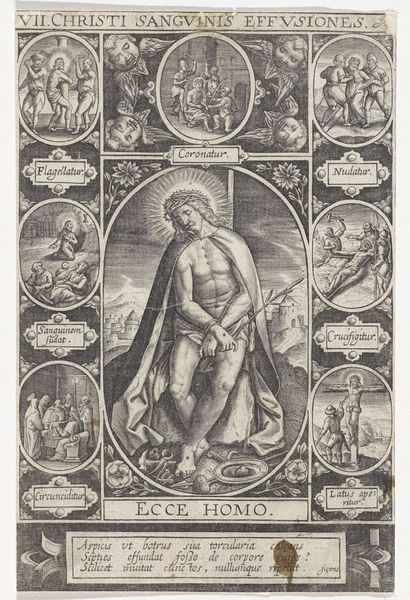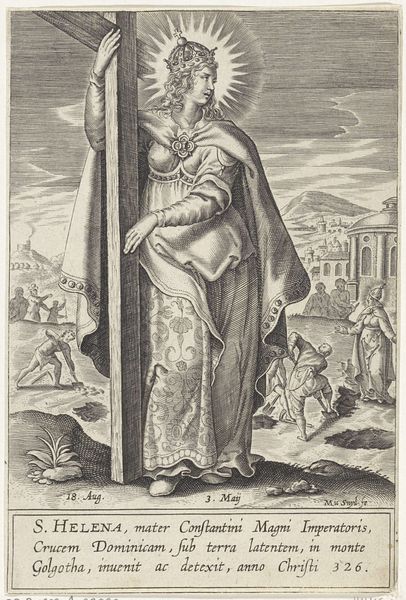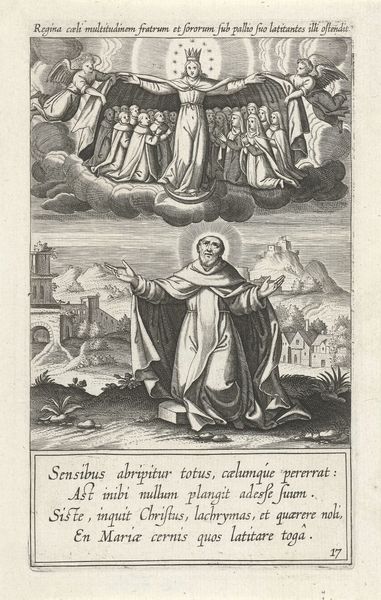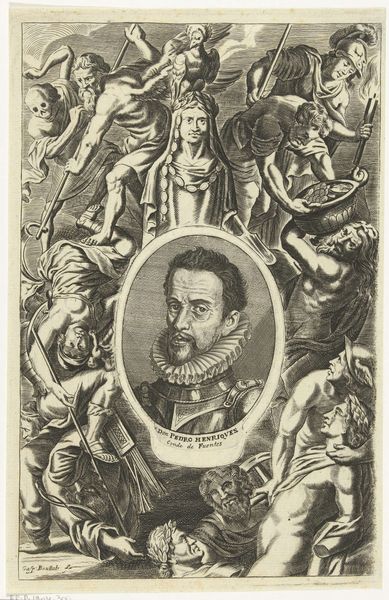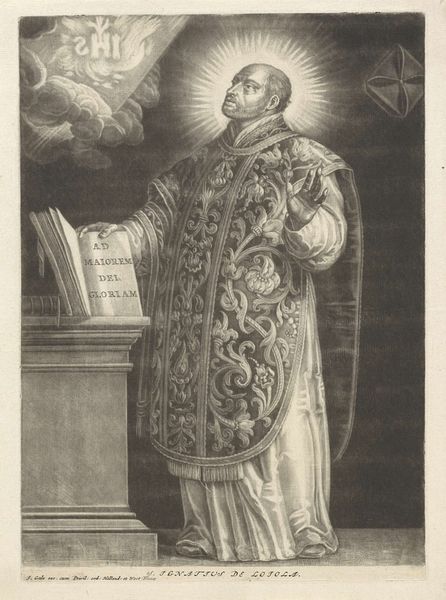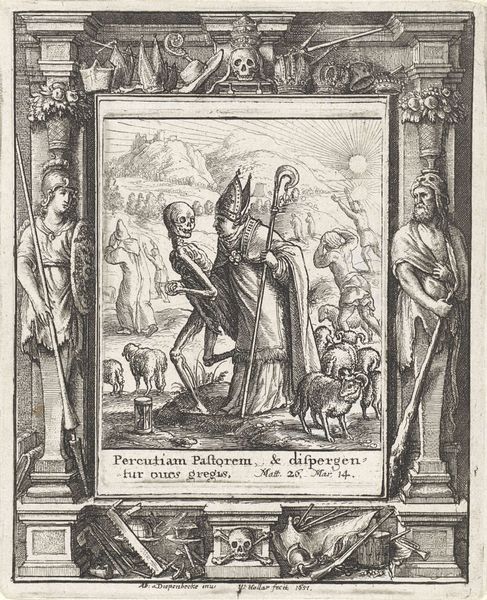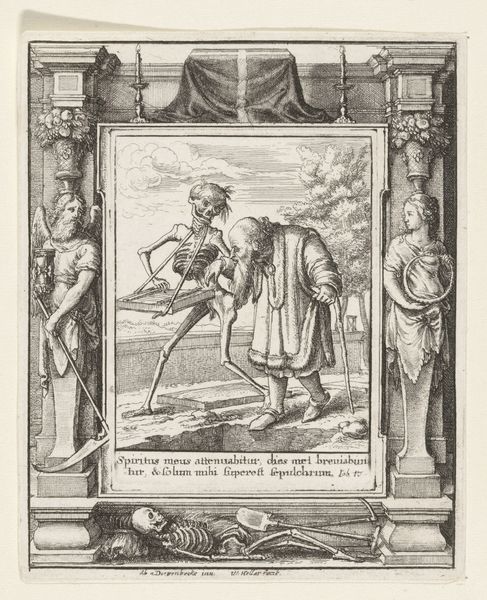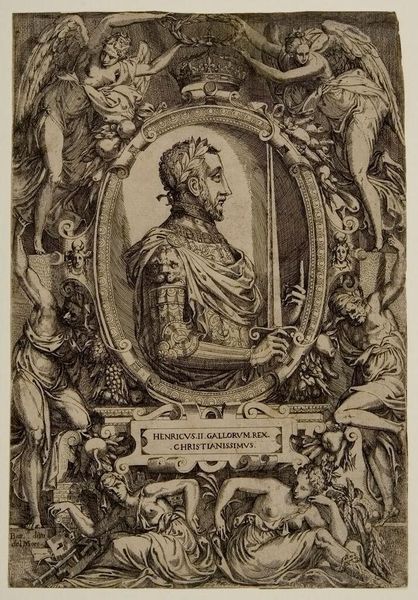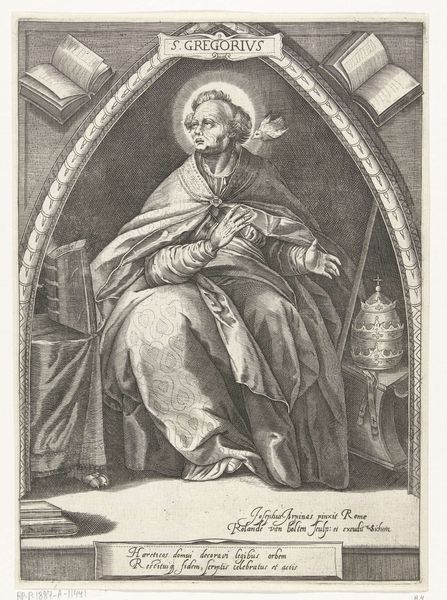
print, engraving
#
portrait
#
baroque
#
pen drawing
# print
#
pen illustration
#
pen sketch
#
pencil sketch
#
figuration
#
pen-ink sketch
#
pen work
#
engraving
#
pencil art
Dimensions: height 510 mm, width 395 mm
Copyright: Rijks Museum: Open Domain
Curator: This is a print depicting H. Norbertus, created sometime between 1651 and 1711 by an anonymous artist. The technique appears to be engraving, or possibly a combination of engraving and etching. It’s quite detailed, wouldn't you agree? Editor: Immediately I'm struck by the airiness, the lightness of it all. It feels as though it's floating, ethereal even, thanks to all those cherubic figures scattered around the central figure. The swirling clouds really add to the sense of elevation. Curator: Yes, the cherubs are prevalent symbols in Baroque art, signifying divine presence and innocence. They create this ornate frame around Norbertus, but what do they represent in this specific context? I think their presence underscores Norbertus’s perceived holiness and his connection to the divine. Each carries some object – foliage, laurel, alluding to life, sacrifice and rebirth, perhaps. Editor: Exactly. Look how deliberately Norbertus is placed front and center. He’s framed not only by cherubs but also his own symbols of authority— the cross and the reliquary. What power dynamics are in play here with the way he commands the gaze? It also tells a story of the church itself, maybe reaffirming the faith during times of turmoil and religious disputes. Curator: Undoubtedly, you are right. His central placement is quite intentional. Consider the reliquary, a vessel holding sacred relics – an emblem of faith and divine grace. Then there’s the processional cross he carries, marking his spiritual leadership, it grounds him. The artist strategically employs symbols that underscore Norbertus's role as a religious figure. Editor: Absolutely, the cross anchors him, linking the divine and the earthly. He’s very austere. Considering that printmaking democratized art production and consumption during this time, wouldn't images like these become important tools for shaping public perception and propagating certain ideologies, religious in particular? Curator: A crucial point to remember! Printed images circulated widely, acting as powerful tools in spreading ideas. Here the composition works with its historical moment to remind its audience that even a simple engraved artwork could hold layers of cultural memory and carry so much political power. It's much more than just a holy figure. Editor: Indeed! These early prints, with their layered symbolism and their role in cultural messaging, gives us a wonderful insight into art history, social history, and art's own means for social commentary.
Comments
No comments
Be the first to comment and join the conversation on the ultimate creative platform.


